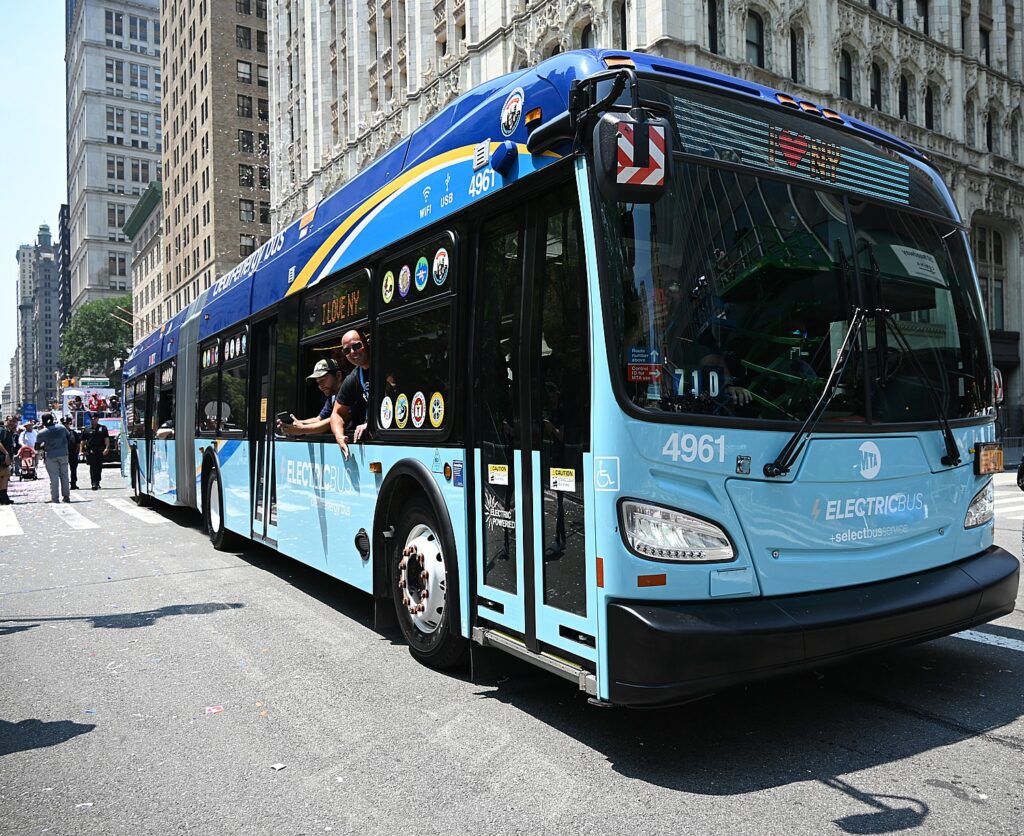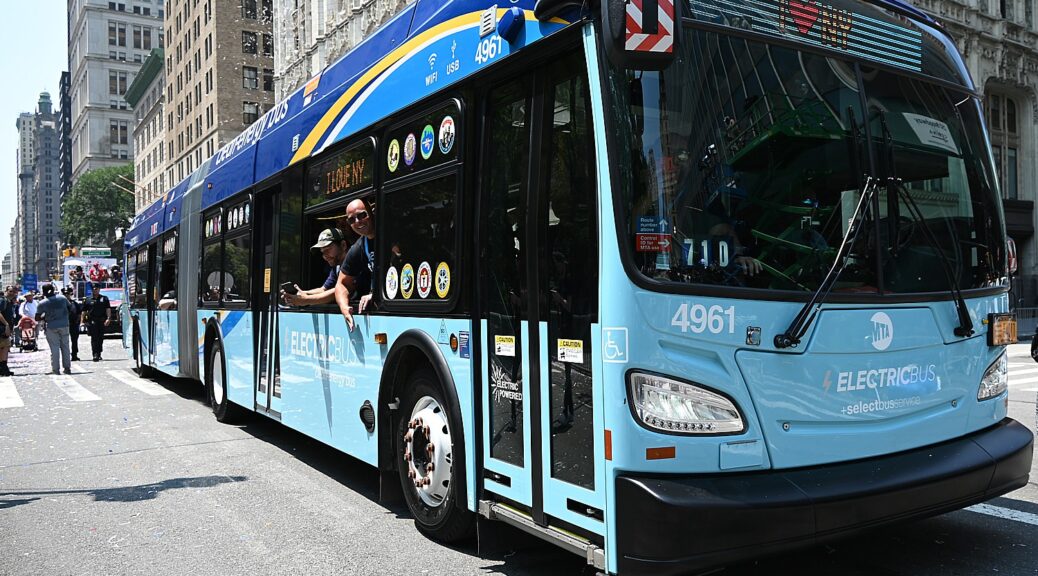
Over one year ago, President Biden signed the Bipartisan Infrastructure Law – a once-in-a-generation investment in our nation’s infrastructure and competitiveness. While “infrastructure week” was a punchline under his predecessor, President Biden is delivering an “infrastructure decade” that is producing real results to change people’s lives for the better, creating good-paying jobs, and boosting American manufacturing.
In his first State of the Union Address in 2022, President Biden highlighted how our historic federal investments in infrastructure would create a visible impact in the lives of American families by committing to start repair on 65,000 miles of roads and 1,500 bridges. The President also committed to making rapid progress across every facet of the law.
Since the last State of the Union, the Administration has surpassed those ambitious goals. This includes launching over 3,700 bridge repair and replacement projects across the country, beginning repair of over 69,000 miles of roadway, awarding funds for over 3,000 new clean transit and school buses, increasing enrollment in the Affordable Connectivity Program to over 16 million households, and approving state plans for water funding, EV charging networks and high-speed internet deployment.
Overall, the Bipartisan Infrastructure Law represents historic progress, as the largest and most significant investment in:
- Rebuilding our roads and bridges since President Eisenhower’s Interstate Highway System;
- Public transit in American history and an historic investment to make public transportation accessible;
- Passenger rail since Amtrak’s inception, 50 years ago;
- Clean water infrastructure;
- Affordable, high-speed internet;
- Tackling legacy pollution and advancing environmental justice;
- Upgrading the power grid to transmit more clean energy and withstand extreme weather;
- Increasing our infrastructure’s resilience against the impacts of climate change, extreme weather events, and cyber-attacks;
- Replacing dirty diesel buses with clean, electric buses across school bus and transit fleets; and,
- A national network of EV chargers in the United States and largest investment in domestic manufacturing of batteries and the critical minerals that power them.
These once-in-a-generation investments are positioning the United States to win the 21st century. That is why the Biden-Harris Administration has been laser-focused on implementing the law.
- To date, the Administration has announced nearly $200 billion in funding and over 20,000 projects or awards, which are highlighted in a new map showcasing all projects and funding awards in all 50 states and territories. These awards and projects touch over 4,500 communities.
- In recent weeks, the President has announced awards for regionally or nationally-significant projects including over $2 billion to upgrade some our nation’s most economically significant bridges and over $1.2 billion in Mega grants. These infrastructure investments will create good-paying jobs – including union jobs and jobs that do not require a college degree. The projects will grow the economy, strengthen supply chains, improve mobility for residents, and make our transportation systems safer for all users. To highlight that progress, the White House unveiled an illustrative map of signature projects on build.gov.
- The Biden-Harris Administration is committed to making the funding opportunities from the Bipartisan Infrastructure Law both accessible and transparent, so communities across America know what to apply for, who to contact, and how to get ready to rebuild. Our goal is to help state, local, Tribal and territorial governments navigate, access, and deploy infrastructure resources that will build a better America. As such, the White House today released an updated calendar of notices of funding opportunity expected throughout the year.
“Made in America”
Indeed, President Biden devoted the largest portion of his State of the Union address to infrastructure and jobs:
We used to be number one in the world in infrastructure. We’ve sunk to 13th in the world. The United States of America — 13th in the world in infrastructure, modern infrastructure.
But now we’re coming back because we came together and passed the Bipartisan Infrastructure Law — the largest investment in infrastructure since President Eisenhower’s Interstate Highway System. (Applause.)
Folks, already we’ve funded over 20,000 projects, including major airports from Boston to Atlanta to Portland — projects that are going to put thousands of people to work rebuilding our highways, our bridges, our railroads, our tunnels, ports, airports, clean water, high-speed Internet all across America — urban, rural, Tribal.
And, folks, we’re just getting started. We’re just getting started. (Applause.)
And I mean this sincerely: I want to thank my Republican friends who voted for the law. And my Republican friends who voted against it as well — but I’m still — I still get asked to fund the projects in those districts as well, but don’t worry. I promised I’d be a President for all Americans. We’ll fund these projects. And I’ll see you at the groundbreaking. (Applause.)
Look, this law — this law will further unite all of America.
Projects like the Brent Spence Bridge in Kentucky over the Ohio River. Built 60 years ago. Badly in need of repairs. One of the nation’s most congested freight routes, carrying $2 billion worth of freight every single day across the Ohio River.
And, folks, we’ve been talking about fixing it for decades, but we’re really finally going to get it done….And that’s what we’re also building — we’re building back pride.
Look, we’re also replacing poisonous lead pipes that go into 10 million homes in America, 400,000 schools and childcare centers so every child in America — every child in American can drink the water, instead of having permanent damage to their brain. (Applause.)
Look, we’re making sure that every community in America has access to affordable, high-speed Internet…
And when we do these projects — and, again, I get criticized about this, but I make no excuses for it — we’re going to buy American. (Applause.) ..and it’s totally consistent with international trade rules. Buy American has been the law since 1933. But for too long, past administrations — Democrat and Republican — have fought to get around it. Not anymore.
Tonight, I’m also announcing new standards to require all construction materials used in federal infrastructure projects to be made in America. (Applause.) Made in America. I mean it. (Applause.) Lumber, glass, drywall, fiber-optic cable.
And on my watch, American roads, bridges, and American highways are going to be made with American products as well.
Folks, my economic plan is about investing in places and people that have been forgotten. So many of you listening tonight, I know you feel it. So many of you felt like you’ve just simply been forgotten. Amid the economic upheaval of the past four decades, too many people have been left behind and treated like they’re invisible.
Maybe that’s you, watching from home. You remember the jobs that went away. You remember them, don’t you?
The folks at home remember them. You wonder whether the path even exists anymore for your children to get ahead without having to move away…That’s why we’re building an economy where no one is left behind.
Jobs are coming back, pride is coming back because of choices we made in the last several years.
You know, this is, in my view, a blue-collar blueprint to rebuild America and make a real difference in your lives at home. (Applause.)
Today, the White House Infrastructure Implementation Team also released new state-by-state fact sheets which outline the progress in all 50 states, DC and the territories as of January 13, 2023:
Alabama
Alaska
American Samoa
Arizona
Arkansas
California
Colorado
Connecticut
Delaware
District of Columbia
Florida
Georgia
Guam
Hawaii
Idaho
Illinois
Indiana
Iowa
Kansas
Kentucky
Louisiana
Maine
Maryland
Massachusetts
Michigan
Minnesota
Mississippi
Missouri
Montana
Nebraska
Nevada
New Hampshire
New Jersey
New Mexico
New York
North Carolina
North Dakota
Northern Mariana Islands
Ohio
Oklahoma
Oregon
Pennsylvania
Puerto Rico
Rhode Island
South Carolina
South Dakota
Tennessee
Texas
Tribal Fact Sheet
US Virgin Islands
Utah
Vermont
Virginia
Washington
West Virginia
Wisconsin
Wyoming

